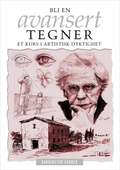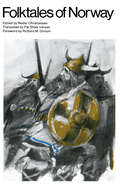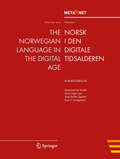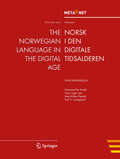- Table View
- List View
Bli En Avansert Tegner: Et Kurs I Artistisk Dyktighet
by Barrington BarberDenne nye boken om tegning og tegnekunst bygger på grunnkurset Bli en god tegner, som har vært en stor suksess. I dette kurset for videregående fører Barrington Barber den vordende kunstner enda et skritt videre på veien mot bedre tegneferdigheter og kompetanse. Hvis du har fulgt ham så langt på reisen, vet du allerede at jo mer du øver, jo større visuelle overraskelser vil du møte og jo flere vanskeligheter er det som skal overvinnes. I Bli en avansert tegner lærer du hvordan du skal finne løsninger på disse utfordringene gjennom bruk av mer avanserte teknikker og en større forståelse som naturlig følger med et grundig studium av et tema. Du vil også bli oppmuntret til å videreutvikle din egen oppfatning av den visuelle verden, slik at du blir i stand til å uttrykke følelsene og idéene i dine egne arbeider og holde fast på inntrykkene til senere bruk.Når du har satt deg inn i de mange teknikkene og fremgangsmåtene som blir presentert her, vil du snart oppdage at din egen forståelse av og innsikt i omverdenen har økt, og åpnet helt nye muligheter for deg.Inneholder mer enn 370 illustrasjoner.
Folktales of Norway (Folktales of the World)
by Reidar T. Christiansen Pat Shaw IversenOften lacking the clear episodic structure of folktales about talking animals and magic objects, legends grow from retellings of personal experiences. Christiansen isolated some seventy-seven legend types, and many of these are represented here in absorbing stories of St. Olaf, hidden treasures, witches, and spirits of the air, water, and earth. The ugly, massively strong, but slow-witted trolls are familiar to English-speaking readers. Less well-known, but the subject of an enormous number of legends, are the more manlike yet sinister "huldre-folk" who live in houses and try to woo human girls. These tales reflect the wildness of Norway, its mountains, forests, lakes, and sea, and the stalwart character of its sparse population. "The translation is excellent, retaining the traditional Norwegian style . . . the tales themselves will also appeal to the interested layman."—Library Journal
Folktales of Norway (Folktales of the World)
by Reidar Christiansen; translated by Pat Shaw IversenOften lacking the clear episodic structure of folktales about talking animals and magic objects, legends grow from retellings of personal experiences. Christiansen isolated some seventy-seven legend types, and many of these are represented here in absorbing stories of St. Olaf, hidden treasures, witches, and spirits of the air, water, and earth. The ugly, massively strong, but slow-witted trolls are familiar to English-speaking readers. Less well-known, but the subject of an enormous number of legends, are the more manlike yet sinister "huldre-folk" who live in houses and try to woo human girls. These tales reflect the wildness of Norway, its mountains, forests, lakes, and sea, and the stalwart character of its sparse population. "The translation is excellent, retaining the traditional Norwegian style . . . the tales themselves will also appeal to the interested layman."—Library Journal
Folktales of Norway (Folktales of the World)
by Reidar Christiansen; translated by Pat Shaw IversenOften lacking the clear episodic structure of folktales about talking animals and magic objects, legends grow from retellings of personal experiences. Christiansen isolated some seventy-seven legend types, and many of these are represented here in absorbing stories of St. Olaf, hidden treasures, witches, and spirits of the air, water, and earth. The ugly, massively strong, but slow-witted trolls are familiar to English-speaking readers. Less well-known, but the subject of an enormous number of legends, are the more manlike yet sinister "huldre-folk" who live in houses and try to woo human girls. These tales reflect the wildness of Norway, its mountains, forests, lakes, and sea, and the stalwart character of its sparse population. "The translation is excellent, retaining the traditional Norwegian style . . . the tales themselves will also appeal to the interested layman."—Library Journal
Folktales of Norway (Folktales of the World)
Often lacking the clear episodic structure of folktales about talking animals and magic objects, legends grow from retellings of personal experiences. Christiansen isolated some seventy-seven legend types, and many of these are represented here in absorbing stories of St. Olaf, hidden treasures, witches, and spirits of the air, water, and earth. The ugly, massively strong, but slow-witted trolls are familiar to English-speaking readers. Less well-known, but the subject of an enormous number of legends, are the more manlike yet sinister "huldre-folk" who live in houses and try to woo human girls. These tales reflect the wildness of Norway, its mountains, forests, lakes, and sea, and the stalwart character of its sparse population. "The translation is excellent, retaining the traditional Norwegian style . . . the tales themselves will also appeal to the interested layman."—Library Journal
The Norwegian Language in the Digital Age: Bokmalsversjon (White Paper Series)
by Georg Rehm Hans UszkoreitThis white paper is part of a series that promotes knowledge about language technology and its potential. It addresses educators, journalists, politicians, language communities and others. The availability and use of language technology in Europe varies between languages. Consequently, the actions that are required to further support research and development of language technologies also differ for each language. The required actions depend on many factors, such as the complexity of a given language and the size of its community. META-NET, a Network of Excellence funded by the European Commission, has conducted an analysis of current language resources and technologies. This analysis focused on the 23 official European languages as well as other important national and regional languages in Europe. The results of this analysis suggest that there are many significant research gaps for each language. A more detailed expert analysis and assessment of the current situation will help maximise the impact of additional research and minimize any risks. META-NET consists of 54 research centres from 33 countries that are working with stakeholders from commercial businesses, government agencies, industry, research organisations, software companies, technology providers and European universities. Together, they are creating a common technology vision while developing a strategic research agenda that shows how language technology applications can address any research gaps by 2020.
The Norwegian Language in the Digital Age: Nynorskversjon (White Paper Series)
by Georg Rehm Hans UszkoreitThis white paper is part of a series that promotes knowledge about language technology and its potential. It addresses educators, journalists, politicians, language communities and others. The availability and use of language technology in Europe varies between languages. Consequently, the actions that are required to further support research and development of language technologies also differ for each language. The required actions depend on many factors, such as the complexity of a given language and the size of its community. META-NET, a Network of Excellence funded by the European Commission, has conducted an analysis of current language resources and technologies. This analysis focused on the 23 official European languages as well as other important national and regional languages in Europe. The results of this analysis suggest that there are many significant research gaps for each language. A more detailed expert analysis and assessment of the current situation will help maximise the impact of additional research and minimize any risks. META-NET consists of 54 research centres from 33 countries that are working with stakeholders from commercial businesses, government agencies, industry, research organisations, software companies, technology providers and European universities. Together, they are creating a common technology vision while developing a strategic research agenda that shows how language technology applications can address any research gaps by 2020.



